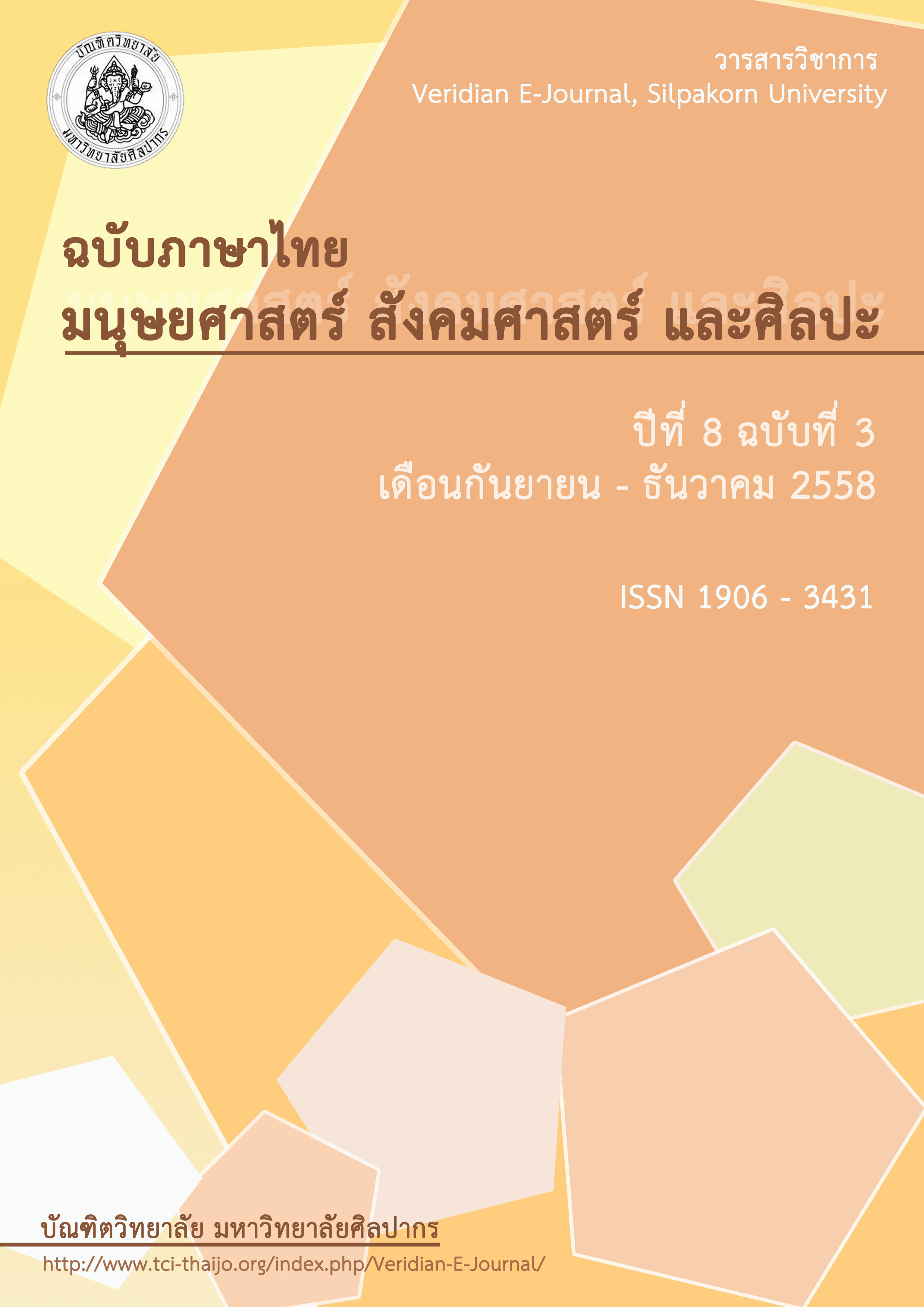การวิเคราะห์กระดูกสัตว์เลื้อยคลานจากแหล่งโบราณคดีถ้ำหมอเขียว อำเภอเมือง จังหวัดกระบี่
Main Article Content
บทคัดย่อ
บทคัดย่อ
เนื่องจากยังไม่มีผู้ศึกษากระดูกสัตว์เลื้อยคลานในระดับชนิดพันธุ์ในงานโบราณคดีมากนัก ทำให้ข้าพเจ้าวิเคราะห์กระดูกสัตว์เลื้อยคลานในแหล่งโบราณคดีถ้ำหมอเขียวเพื่อดูความหลากหลายและการเปลี่ยนแปลงชนิดสัตว์เลื้อยคลาน ตลอดจนสามารถอธิบายความสัมพันธ์ระหว่างมนุษย์กับสัตว์เลื้อยคลานและสภาพแวดล้อมของแหล่งโบราณคดีถ้ำหมอเขียวในอดีต ตัวอย่างที่นำมาทำการศึกษาครั้งนี้เป็นตัวอย่างกระดูกสัตว์เลื้อยคลานที่ได้จากการขุดค้นแหล่งโบราณคดีถ้ำหมอเขียวของอาจารย์ ดร.ประสิทธ์ เอื้อตระกูลวิทย์และคณะ ขุดค้นในปี พ.ศ. 2551 มีจำนวนกระดูกสัตว์เลื้อยคลานทั้งหมด 7,299 ชิ้น จากกระดูกสัตว์ทั้งหมด 27,502 ชิ้นและตัวอย่างกระดูกสัตว์เลื้อยคลานที่ใช้ในการเปรียบเทียบเป็นตัวอย่างจากคณะวิทยาศาสตร์ จุฬาลงกรณ์มหาวิทยาลัยและพิพิธภัณฑ์ธรรมชาติวิทยา แห่งองค์การพิพิธภัณฑ์วิทยาศาสตร์แห่งชาติ ผลการวิเคราะห์กระดูกสัตว์เลื้อยคลานพบสัตว์เลื้อยคลานทั้งหมด 15 ชนิด จาก 3 อันดับคือ อันดับเต่า-ตะพาบ (Order Testudines) 10 ชนิด อันดับกิ้งก่า-งู (Order Squamata) 2 ชนิดและอันดับสุดท้ายคืออันดับจระเข้ (Order Crocodylia) จากชนิดของสัตว์เลื้อยคลานที่พบสามารถสันนิษฐานได้ว่า สภาพแวดล้อมโบราณของแหล่งโบราณคดีถ้ำหมอเขียวในช่วงโฮโลซีนตอนต้น (Early Holocene) เป็นป่าดิบชื้นและมีแหล่งน้ำที่ไหลตลอดทั้งปี และเนื่องจากกระดูกสัตว์เลื้อยคลานที่พบบางส่วนถูกเผาไฟและมีร่องรอยการสับ-ตัด สันนิษฐานได้ว่ากระดูกสัตว์เลื้อยคลานที่พบในแหล่งโบราณคดีถ้ำหมอเขียวเป็นสัตว์ที่บริโภคโดยมนุษย์ในสมัยก่อนประวัติศาสตร์
Abstract
In Thailand, there have few studies on reptile bones species in archeology and the purpose of this study to analyze the reptile bones in Moh-Khiew cave to see the variety and changes in reptile species. The result of an analysis of reptile bones can explain the relationship between humans and animals, and the paleoenvironment of Moh-Khiew cave. Reptile bones in this study from Moh-Khiew cave excavated by Professor Dr. Prasit Auetrakulvit, the excavation in 2551. A reptile boness 7299 pieces from all 27502 pieces of animal bones and the samples of reptiles bone used in comparing from the Faculty of Science. Chulalongkorn University and the National Science Museum. The analysis found the bones of reptiles, 15 species form 3 orders Order Testudines is 10 species Order Squamata 2 species and Order Crocodylia. Species of reptiles can assume that the paleoenvironment of Moh-Khiew cave are tropic rain forest during the early and have water resources throughout the year, and because the bones of reptiles were found partially burned and traces the cutmark. The assumption was that the bones of reptiles found in Moh-Khiew cave consumption by humans in prehistoric.

